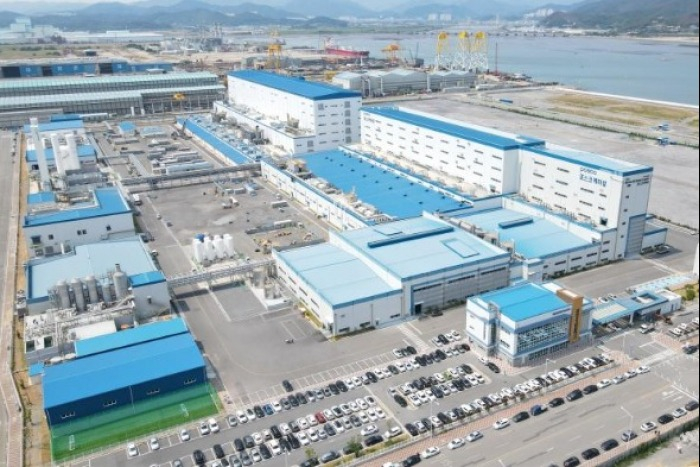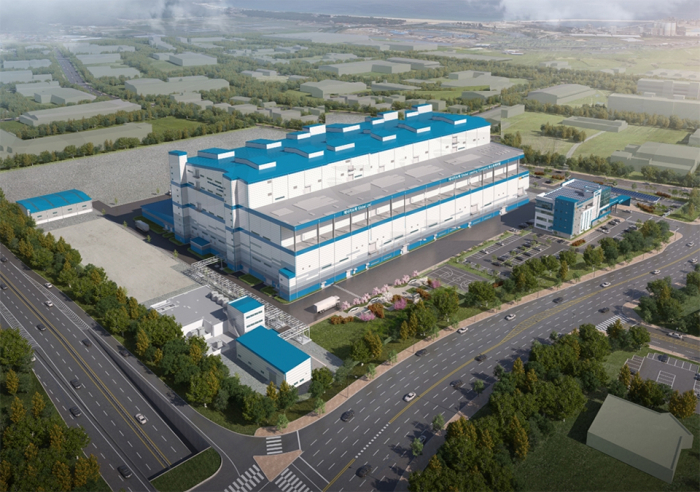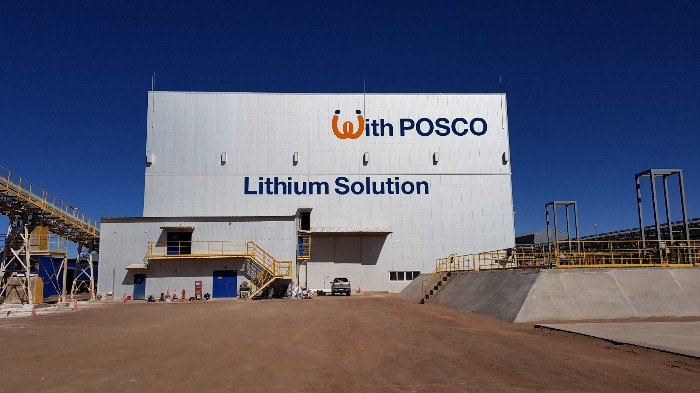Batteries
POSCO revises up 2030 cathode output target by 40%
The capacity increase will likely cost more than $8 billion
By Jul 07, 2023 (Gmt+09:00)
3
Min read
Most Read
LG Chem to sell water filter business to Glenwood PE for $692 million


Kyobo Life poised to buy Japan’s SBI Group-owned savings bank


KT&G eyes overseas M&A after rejecting activist fund's offer


StockX in merger talks with Naver’s online reseller Kream


Mirae Asset to be named Korea Post’s core real estate fund operator



POSCO Future M Co. is aiming to be South Korea’s largest cathode material producer by 2030, by when it hopes its output will sharply exceed those of domestic rivals such as LG Chem Ltd., EcoPro Co. and L&F Co., according to industry sources on Friday.
The POSCO unit recently revised up its 2030 cathode output target by nearly 40% to 1 million tons a year from the previous one. That is more than half the 470,000 tons that LG Chem aims to churn out by 2028.
The 2030 target is about a ten-fold increase from its current capacity of 105,000 tons as of 2022 and is estimated to cost more than 10 trillion won ($8 billion) in new investment by 2030.
By comparison, EcoPro plans to produce 710,000-ton cathodes by 2027, while L&F is targeting 400,000-ton output by 2026. A cathode is a key ingredient of batteries.
POSCO produces cathodes at three locations: Pohang, North Gyeongsang Province and Gwangyang, South Jeolla Province in South Korea; and in Canada.

The upward revision comes after POSCO Future M has bagged a total of 83.5-trillion-won ($65 billion) supply orders from leading EV battery makers this year: 40 trillion won from Samsung SDI Co. ; 30.3 trillion won from LG Energy Solution Ltd. ; and 13.2 trillion won from Ultium CAM, its joint venture with General Motors Co.
They should be delivered over the next four to 10 years.
If its current facilities are not big enough to boost cathode production as planned, POSCO will build a third domestic plant probably in the Saemangeum Industrial Complex off the West Sea, which is emerging as a new production base for other battery materials companies.
Overseas, it is looking to expand its capacity in Canada, or in the US.

PRECURSORS
Cathode production increase must come with precursor output growth. A precursor is a key material of cathodes, making up about half of the cost of manufacturing a cathode. Currently, POSCO Future M relies heavily on precursor imports from China.
To produce a one-ton cathode, the equivalent amount of precursors must be put into the manufacturing process. As of 2022, POSCO’s precursor production capacity is just one-tenth of that of cathodes.
Last month, it said it will build the first precursor plant of Ultium CAM in North America by 2026.
LITHIUM

In tandem with POSCO Future M’s precursor output growth, POSCO Holdings Inc. will substantially ramp up its lithium processing capacity. Lithium is a basic material of precursors.
The holding company has also revised up the target for its 2030 lithium processing capacity increase by 40% to 420,000 tons a year.
Currently, POSCO Holdings brings in lithium from Argentina and Australia and then processes them at home.
But it is now considering building lithium processing plants in those countries, or establishing precursor production facilities there.
Their parent POSCO Group is fine-tuning the details of the capacity increase for cathodes, precursors and lithium processing.
Building a 10,000-ton-capacity cathode plant costs about 100 billion won, so POSCO Future M is predicted to spend more than 10 trillion won to boost both cathode and precursor output.
On Monday, POSCO Group Chairman Choi Jeong-woo said the steel giant is working to transform into a comprehensive eco-friendly business group, spanning carbon-neutral steel, rechargeable battery materials and hydrogen.
Under the plan, it will spend 121 trillion won ($92 billion) by 2030, more than half of which is understood to go to non-steel sectors.
Write to Jae-Fu Kim at hu@hankyung.com
Yeonhee Kim edited this article
More to Read
-
 SteelPOSCO gears up for big stride as green material firm with Hyper NO
SteelPOSCO gears up for big stride as green material firm with Hyper NOJul 06, 2023 (Gmt+09:00)
3 Min read -
 SteelPOSCO to spend $92 bn by 2030 to boost eco-friendly business
SteelPOSCO to spend $92 bn by 2030 to boost eco-friendly businessJul 03, 2023 (Gmt+09:00)
2 Min read -
 BatteriesPOSCO breaks ground on lithium hydroxide plant in S.Korea
BatteriesPOSCO breaks ground on lithium hydroxide plant in S.KoreaJun 13, 2023 (Gmt+09:00)
2 Min read -
 BatteriesPOSCO-GM JV to double cathode output, build precursor plant
BatteriesPOSCO-GM JV to double cathode output, build precursor plantJun 02, 2023 (Gmt+09:00)
3 Min read
Comment 0
LOG IN


